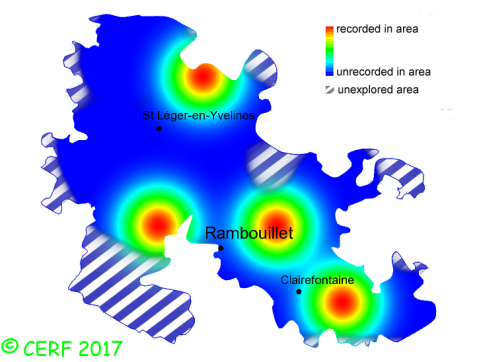common name(s) : Nutty Brittlegill, Entire Russula
New classification: Basidiomycota/Agaricomycotina/Agaricomycetes/Incertae sedis/Russulales/Russulaceae
Former classification: Basidiomycota/Homobasidiomycetes/Agaricomycetideae/Russulales/Russulaceae
synonyms: Russula polychroma, Russula integra-integra
edibility : edible
|
|
|
The cap is brown to Bordeaux to chocolate; its margin is striate when mature.
The cap surface is smooth, a bit viscid in wet weather.
The stem is white, without ring.
The flesh is white, unchanging; its taste is mild; the odour is not distinctive;
its texture is grainy (breaking like a chalk stick).
The gills are yellow then ochre, free, crowded .
The spore print is dark ochre. This species is mycorrhizal.
It grows on the ground, in coniferous woods, on a rather calcareous soil, with fir and spruce.
The fruiting period takes place from June to November.
| Dimensions: | width of cap approximately 9 cm (between 4 and 15 cm) |
| | height of stem approximately 8 cm (between 3 and 12 cm) |
| | thickness of stem (at largest section) approximately 20 mm (between 13 and 30 mm) |
Chemical tests : flesh becoming orange pink when in contact with iron sulphate; faint reaction to Ga´ac (more or less quick blue);.
Distinctive features : Variable colour, but never red, orange nor yellow; shiny cap surface; mild taste; under conifers in the mountains
Russula integra is quite rare and localised in the forest of Rambouillet, and is occasional, more generally speaking
.
|  | | Above : distribution map of Russula integra in the forest of Rambouillet |
|
page updated on 14/01/18